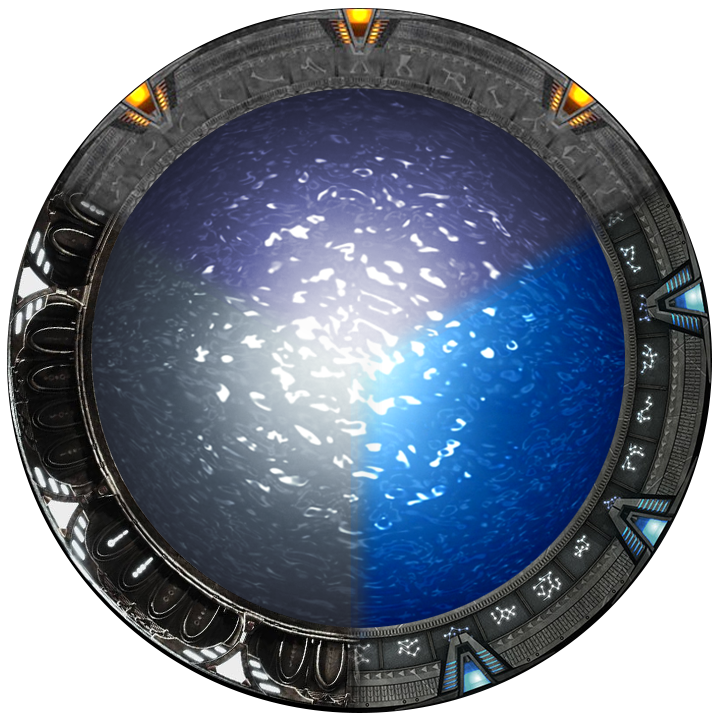Disappointed. But didn’t the have receptors for differently polarized light? What about that?
Color me appointed, at least we’re not missing out on fresh new colors!
Polarization filters on retinal photoreceptor won’t make light wavelength (color) be perceived different, it just changes the conditions in which it’s detected. If those polarized cells would cover unique colors compared to the rest, it would kinda resemble the highlight effect in Mirror’s Edge, where something with a different angle than the surroundings stand out (sudden color gradient)
Hardware vs software solution?
They still taste good. So they got that going for them I guess.
I’m not a fan, but that’s neither here nor there. I’m weird.
I’m just not sure that flavor can be considered a positive character trait?
Maybe I’m stupid. Who knows? Clearly not me.
Its the crunchy nature that I find appealing, the flavor is only okay by itself.
I like them in salad rolls, with marinara dip, and deep fried.
Usually you take the shell off before eating
Maybe you taste good at least.
I also would not know about that.
Imagine how OP their colour perception would be if they did have that mental processing power
Oh that explains this scene
Makes me feel better about being a human. Our eyes are not deficient. Humans are superior!
deleted by creator
Some hugely detailed and really certain knowledge from neurology…
They can still see true magenta though.
“In short, I am superior to any other species, race, or creed. And especially femoids, fuck them.”
PussSlayer666, CoD Clan Leader.
Reminds me a little of CD digital audio. The original Red Book audio standard hasn’t really been improved upon because it’s uncompressed audio which covers basically all of the range of human hearing within the capabilities of any speaker we could build. It’s uncompressed because in the early 80’s when the tech hit the market, it was completely unfeasible to include the CPU and RAM needed to decompress audio in real time.
Shrimp has more color receptors because he doesn’t have enough neurons to run trichromacy, so he sees in EGA.
Oh man.
12 year old me waiting for hours to rip mp3s from cds always wondered about this.
Like why isn’t it already compressed?
The answer is that storage was available but processing wasn’t. Amaze.
Mp3 is already compressed, as is the MP2 CDs use.
If it wasn’t conpressed, you’d be looking at CDs per track, instead of tracks per CD.
What are you on about? CD-DA, aka audio CD, aka red book audio, is uncompressed 16-bit PCM sampled at 44100Hz. It is lossless.
MP3 (MPEG-1/2 Audio Layer III) is a lossy encoding standard commonly used for online audio distribution and steaming. MP2 usually refers to MPEG-1 Audio Layer 2, which was most commonly used in Digital Audio Broadcast.
Neither are used in ‘regular’ CD audio.
I’d like to subscribe to the format facts newsletter. Can you do VHS next?
Each frame of video on VHS actually occupies a diagonal section of the tape. That allows the width of the tape to be effectively longer which means it can store more information. It’s also why the image will jitter a bit when the tape is paused since there’s multiple frames of data under the read head at any given time.
The round hole in the middle of the cassette near the tape path is designed to have a light bulb on a stick inserted into it.
Most of the tape is (approximately) opaque due to the magnetic recording media, but the very ends are transparent. If you open the cassette’s lid and look at the uncovered ends of the cassette, you’ll see a hole on each end that has a path through the cartridge to the light bulb hole, only interrupted by the tape itself. Photoreceptors in the VCR sit just outside those holes, and if light is detected it means that the clear leader is starting to unwind from the spool meaning the tape is over, so this is how the VCR knows to stop the tape. This is why so many VCRs and rewinders glow inside.
Later hardware swapped it for an infrared LED and detectors but still did the job optically.
It is lossless.
I’m not sure that’s the right word for uncompressed digital audio, because it’s lossless compared to what? Presumably an analog recording or the original input signal? Because Shannon-Nyquist, with CD audio you can’t get anything higher than what? 16kHz out of it, but within that limitation you can reproduce any arbitrary waveform within a speaker’s ability to produce given the laws of physics regarding inductance and inertia.
MP3 does use a lossy compression, but you can maintain listenable quality while cramming about 10 times as much audio into a given space. You can get just over an hour of Red Book audio on a CD, and about 11 hours of mp3s, give or take. You might get lower audio bandwidth or various kinds of artifacts but it’ll still sound pretty good, it’s way more practical to store and transmit over the internet. We didn’t Napster no .wav files.
FLAC and similar formats use lossless compression, kind of like a .zip file. If you rip a CD to FLAC, and you were to then burn a CD from that FLAC, the data on the new CD would be identical to the old one. So you get as-perfect-as-we-can-do digital audio, but only 5 or 6 hours worth would fit on a CD. Someone somewhere on this earth has filled a compact disc with FLAC files, I’m sure.
Shrimp has more color receptors because he doesn’t have enough neurons to run trichromacy, so he sees in EGA.
love this. nice job :)

I remember experiencing the EGA to VGA graphics evolution when I was growing up. I remember thinking the VGA almost seemed too real.
In my mind, this was a game that felt like it was pretend:

But this felt entirely too real:

Have you played The Crimson Diamond? EGA is back, baby!
If you love the old murder mystery games like the Laura Bow Mystery Series, you will enjoy this game
Oh man, I had completely forgotten about the old Laura Bow games! Might have to check this out!
Is moral of your story that adults having frequency detection limited to 16khz, with older adults lower, might still be able to detect music well enough?
Shrimp photoreceptor situation is crazy
The shrimp are holier than we are because they cannot see the devil’s color (it’s pink 🩷)
You mean light red?
That is clearly embarrassed white
Blushing white lol
ITT: people saying pink (light red) when they mean magenta
I would say magenta is a different color than pink. But I was just making a joke about how there’s light bike and light yellow but if you add white to red it’s a different color
But compared with human eyesight, they could still see more ‘colors’ - As we see (almost) the same white in incandescent bulbs as LEDs and fluorescents, they might actually see the component colors and their intensities.
Not unlike how we may hear a combination tone when multiple other tones are played, and hear the difference (or sum) of them.
How would you suggest they do that. White light near equally activates our 3 cones because all spectrums of light are in it.
White light near equally activates all 12 shrimp cones because all spectrums of light are in it.
Which spectrum of color is left out of white light that wouldn’t light up a cone associated with it?
6500k vs 5000k is noticeable for humans
Because white light from an LED bulb is not all spectrums of light. It’s 3. It’s pure red, pure green, and pure blue that stimulates our cones equally so our brain can’t tell the difference. Like how TVs can make any color out of just three colors of sub pixel.
White light from an incandescent bulb is all spectrums of light. Through a prism it makes a rainbow. White LEDs through a prism make three stripes. For more information of this and some visuals check out this article. https://en.wikipedia.org/wiki/Color_rendering_index
I think this speaks to a significant misunderstanding that most people hold of the way vision actually works.
Most people imagine that vision is a relatively simple process by which our eyes detect and transmit to us the nature of the world. Not so.
Eyes are complex and interesting organs in their own right but fundamentally what they do is relatively simple. They are able to detect and report to the brain certain qualities of the light that hits them. Primarily these are: intensity, direction, and proximity to three points on the frequency spectrum (what we perceive as red, green, and blue). But this data alone is not vision. Vision is a conscious experience our brains create by interpreting and processing this data into the visual field before us—basically, a full scale 3D model of the world in front of us, including the blended information on reflection and emission that color entails.
Quite amazing! Most of this takes place in the human brain, and not the eyes. From this perspective, it is not terribly surprising that an organism with more complex eyes but a much simpler brain might have worse vision than we do.
It’s amazing and crazy to think, too, that the “theater” our brains create is an equilibrium point of laziness (to save energy) and usefulness (to help survival). So, surely, there are things we are just unable to see. But also, probably, there are different things that get mapped to the same things in the “theater.” I’m just speculating though but it makes sense.
It’s a good thing we can surpass the limitations of our perception by creating external tools that augment our senses and translate extra-sensory information about the world into something human perceptible. We’ve even gone so far as to send such devices into space.
Ha! I read the following Science new article just today about how Purple Only Exists In Our Brains. It’s written for a younger audience (I think), but it lays out how our sight works, and how our brains trick us into seeing purple (a red-blue colour, as opposed to violet).
Poor shrimpos, no purple for them, I bet.
This phrasing always bothers me a little, because, as even the article quotes a scientist saying: “All colors are made up by the brain.”
Purple is special because it triggers from non-continuous wavelengths of light, not because the subjective experience of purple is an invention of the brain. Being ‘invented’ is something common to all colors. Or sounds. Or tastes.
Color is not invented by the brain but is socially constructed. You cannot look inside someone’s brain and find a blob of green, unless idk you let the brain mold for awhile. All you can do is ask the person to think of “green” and then correlate whatever their brain patterns are that respond to that request, but everyone’s brain patterns are different so the only thing that ties them all together is that we’ve all agreed as a society to associate a certain property in reality with “green.”
If you were an alien who had no concept of green and had abducted a single person, if that person is thinking of “green,” you would have no way to know because you have no concept of “green,” you would just see arbitrary patterns in their brain that to you would seem meaningless. Without the ability to reference that back to the social system, you cannot identify anything “green” going on in their brain, or for any colors at all, or, in fact, for any concepts in general.
This was the point of Wittgenstein’s rule-following problem, that ultimately it is impossible to tie any symbol (such as “green”) back to a concrete meaning without referencing a social system. If you were on a deserted island and forgot what “green” meant and started to use it differently, there would be no one to correct you, so that new usage might as well be what “green” meant.
If you try to not change your usage by building up a basket of green items to remind you of what “green” is, there is no basket you could possibly construct that would have no ambiguity. If you put a green apple and a green lettuce in there, and you forget what “green” is so you look at the basket for reference, you might think, for example, that “green” just refers to healthy vegetation. No matter how many items you add to the basket, there will always be some ambiguity, some possible definition that is compatible with all your examples yet not your original intention.
Without a social system to reference for meaning and to correct your mistakes, there is no way to be sure that today you are even using symbols the same way you used them yesterday. Indeed, there would be no reason for someone born and grew up in complete isolation to even develop any symbols at all, because they would just all be fuzzy and meaningless. They would still have a brain and intelligence and be able to interpret the world, but they would not divide it up into rigid categories like “green” or “red” or “dogs” or “cats.” They would think in a way where everything kind of merges together, a mode of thought that is very alien to social creatures and so we cannot actually imagine what it is like.
We don’t really detect direction of light exactly. Instead we detect the location in the eye where the light landed, and have lenses to focus the light onto our retina. That relationship does imply some of the directionality of the light, by ignoring light that goes in certain directions and relating the direction of light that does get detected to the location it ends up.
Yeah I was trying to avoid those details. I think it’s fair to summarize that as a system that detects the direction light is coming from.
By the same logic, we don’t detect light, just the change in shape of certain proteins. The sky isn’t blue, it’s a subset of sunlight. We don’t really touch things, we transmit forces with tiny magnets. Computers don’t really do math, they just arrange states in certain ways.
The world
is beautifulmakes my brain release endorphins
*we detect the direction of light by the location in the eye…ect.
There fixed it for you.
ect.
etc. It stands for the Latin words et cetera.
You haven’t been saying ectcetera have you? Oh no.
Correctors better come correct.
Isn’t it amazing how birds reverse engineered airplanes?
That’s silly thinking. Everyone knows birds aren’t real, so they’re just late-stage planes created by engineers forced to follow certain constraints.
Did a shit job of it too, got the wings all flapping around like a bunch of idiots.
I want to see a bird swing around its break as a propeller.














